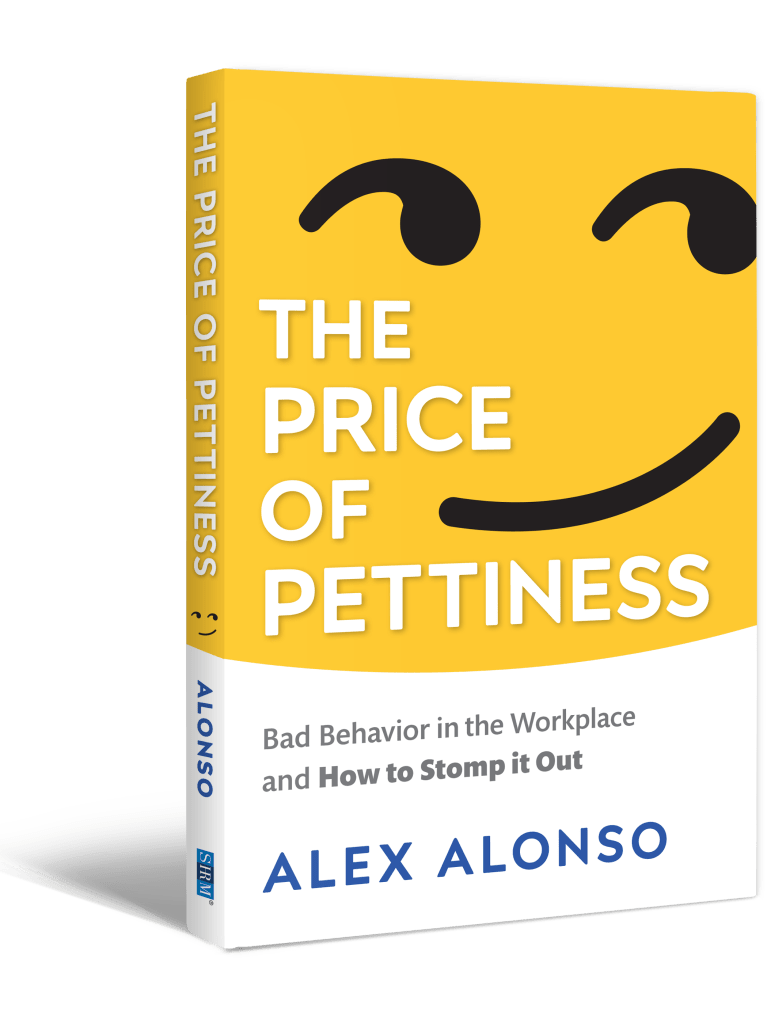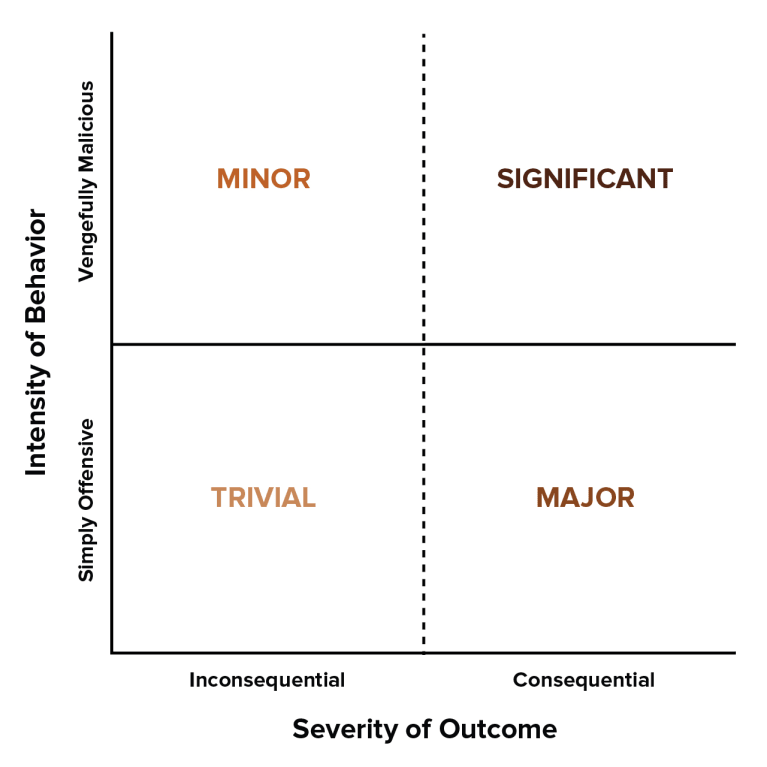This is the first of three excerpts adapted from The Price of Pettiness (SHRM, 2019), written by Alex Alonso.
Pettiness, the word that is, dates back to the 14th century, and derives from petit or "small", "minor" in Middle English/Old French. Today, we understand pettiness as a construct based on twentieth-century theories of motivation and personality informed by various psychological and psychoanalytical concepts including neuroticism, stress and stressors, self-image, intelligence, and many others. 
Seven hundred years after petty entered the vernacular, people are still "sweating the small stuff." More evidence and increasingly refined conceptualizations in the professional literature prove that pettiness is a defining personality trait, which can predict human behaviors (such as social deviance and patriotism) as well as states of mind (such as depression and life satisfaction).
How Pettiness Rears Its Ugly Head
Over the course of the last year, my research team and I conducted a broad study to identify pettiness and how it manifests itself in the workplace. We asked more than 15,000 business professionals from a wide array of industries and disciplines to share their stories of pettiness so that we could learn first-hand what they considered to be petty behavior. The participants described actual incidents and tagged them with a category based on the Four-Quadrant Model of Pettiness. The categories were:
1.Trivial: Annoying, unpleasant behavior that produces no measurable outcome. (simply offensive/inconsequential)
2.Minor: Obnoxious, mean-spirited or self-serving behavior that others notice, but for which the repercussions are not serious. (vengefully malicious/inconsequential)
3.Major: Disagreeable behavior that causes short-term damage to an individual or organization. (simply offensive/consequential)
4.Significant: Destructive, infuriating behavior that results in lasting, unrecoverable damage to one's career or reputation or that negatively affects an organization's goodwill or finances. (vengefully malicious/consequential)
What we learned was absolutely astounding; here's what really jumped out at us from our research:
- Less than one percent of respondents said they never witnessed petty behaviors in their workplace; and
- Of the 99 percent who encountered petty behaviors in their workplace, three out of four witnessed an incident in which no action was taken against the individual engaging in the behavior.
The big picture was no less surprising. First and foremost, it's clear that pettiness abounds in all enterprises, like an endless negative energy source.
Second, pettiness takes many shapes and forms, which relates to the third insight: people are extremely creative, both in the intensity of their petty behaviors and in how they interpret the severity of the outcomes of those behaviors.
Fourth, people want to eradicate pettiness, but aren't always sure how to go about it. When there is no action taken in response to pettiness, its targets and witnesses eventually distrust their leaders and lose their morale—and the behaviors continue.
A New Theory of Pettiness
Using this background as a roadmap, we developed a theory and model in which pettiness is redefined by two newly identified dimensions:
1.Intensity of the petty behavior. Acts of pettiness occur on a spectrum; they're not all the same. Yelling at someone for accidentally stepping on your toe, for instance, is petty, but not as intensely petty as seeking to destroy someone for mispronouncing your name at a company event. It's a matter of comparison.
2.Severity of the outcomes associated with the petty behavior. The results of one's acts of pettiness also run the gamut. To someone aggrieved by a co-worker's failure to share a bar tab, for example, it may seem like a good idea at the time to publicize the co-worker's cheapness on the company blog in the guise of a post about corporate culture. It's no longer a good idea when the co-worker files a harassment claim alleging a hostile work environment due to the post and the blogger is fired.
The body of research on pettiness allows us to start thinking of pettiness as a potentially changeable state, rather than solely as an immutable trait. This will enable us to do more than identify petty people: we can change people's petty ways.
The model of the new theory depicted below is designed to help us understand how all petty behaviors fall into certain categories. The y axis measures the "intensity" of the petty behavior (from "simply offensive" to "vengefully malicious") and the x axis measures the "severity" of the outcomes of the behavior (from "inconsequential" to "consequential"). Intensity and severity intersect to yield four quadrants, each quadrant a category of petty behavior.

To discourage petty behaviors in the workplace, organizations must point them out and describe their effects. Management and HR can implement intervention techniques, such as individual coaching sessions and performance improvement plans.
Alexander Alonso, Ph.D., SHRM-SCP, is SHRM's Chief Knowledge Officer.
Visit the SHRMStore to order a copy of The Price of Pettiness.
Was this resource helpful?



